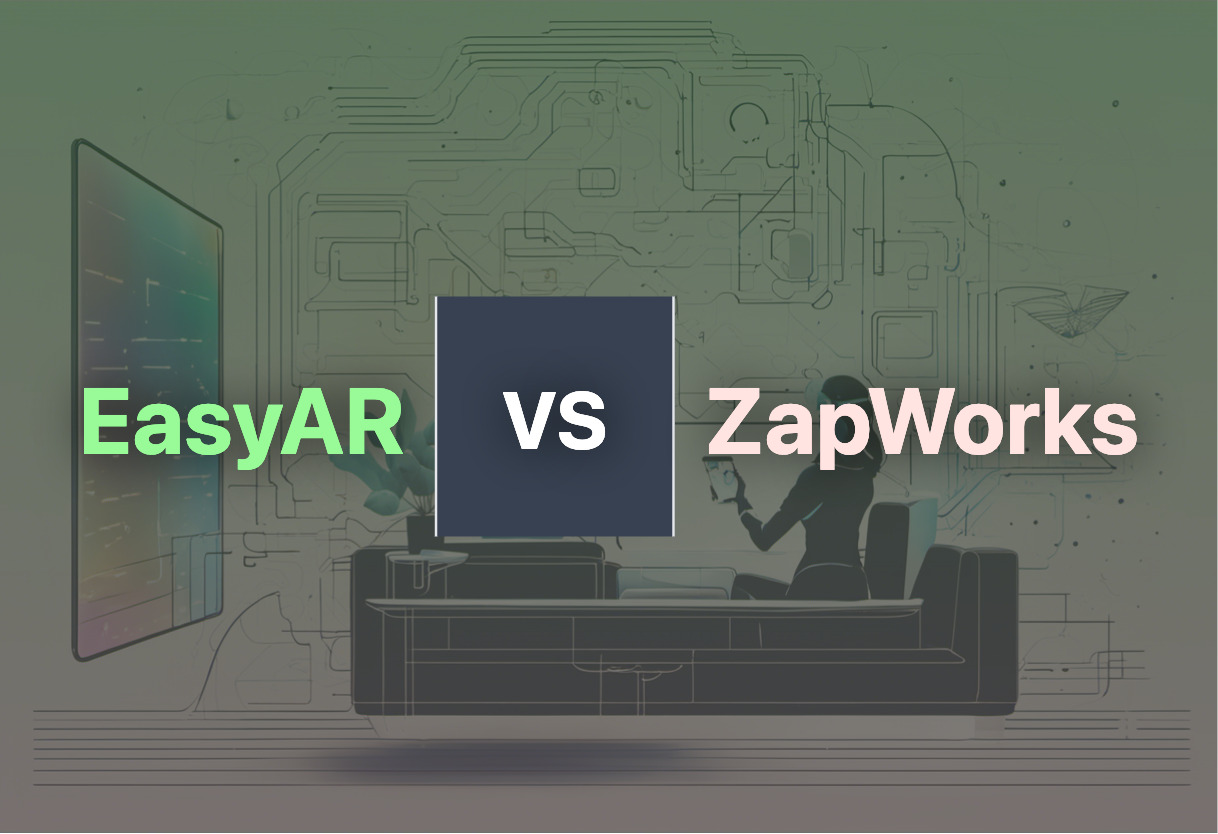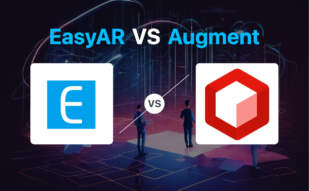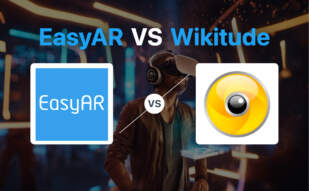For innovative, AR-focused developers longing for advanced capabilities and city-scale deployments, EasyAR proves the better choice. However, ZapWorks wins with straightforward usage, AR content creation and optimised for education and marketing fields.

Key Differences Between EasyAR and ZapWorks
- EasyAR offers a variety of AR software types, with EasyAR SDK for cross-platform support. ZapWorks focuses mainly on AR content creation with coding options.
- EasyAR uses a single RGB camera to capture spatial info. ZapWorks relies mostly on tracking types.
- ZapWorks is an ideal tool for education, marketing, while EasyAR suits wide industrial chain applications.
- Pricing for EasyAR starts from $39/month. ZapWorks, however, varies its pricing based on user profile and app embed.
| Comparison | EasyAR | ZapWorks |
|---|---|---|
| Platform | AR platform for application development, digital animations | AR ecosystem, creative suite, designer, studio, AR SDKs |
| Features | Relocalization, persistent AR content, local & cloud-based, AR Cloud Image Recognition | No-code, low-code, custom code options, drag & drop interface, various tracking options |
| Software | EasyAR Sense 4.0, SenseMARS | ZapWorks Designer, Zapworks Studio |
| Pricing | $39/month, free trial | Varies for personal, business, education use, and app embed |
| Key Advantages | Easy integration, accurate AR features | Flexibility of code editor, priority support, robust face tracking |
| AR Solutions | Object vertical, horizontal auto spawning, AR configurator, AR measurement | World tracking, image tracking, face tracking |
| API Integration | Yes | Yes |
| Use Cases | Retail, education, repair and maintenance, medical industry | Education, branding, product innovation, sales & marketing efforts |
| Unique Offerings | EasyAR Mega city-scale AR solution | ZapWorks Hackathon, AR content creation competition |
What Is EasyAR and Who’s It For?
EasyAR is a complex AR platform established in 2012, aimed at application developers focused on creating engaging digital animations. Designed for ease of use, it provides compelling features like relocalization, persistent AR content, and efficient accessibility through local and cloud-based options.
This feature-rich platform is suitable for those in the retail, education, repair and maintenance, medical industry and more. EasyAR’s primary audience includes developers who seek to bring enhanced AR experiences to users across a diverse range of platforms.

Pros of EasyAR
- Offers cross-platform support for iOS, Android, Windows, macOS
- Provides easy integration with API access
- Packed with accurate AR features including AR Configurator, AR Measurement, AR Floor Tiling
Cons of EasyAR
- Limited web support can hinder full utility
- Lacks optimization for smoother functional experience
- Unfeasible pricing for some potential users
What Is ZapWorks and Who’s It For?
ZapWorks, an AR ecosystem equipped with a creative suite, is a globally recognized tool for creating captivating AR content. Designers, developers, and marketers alike can harness this platform to formulate WebAR experiences without requiring extensive coding skills.
Primarily intended for educators and brands looking to drive innovation, it offers varied tracking types for versatile AR experiences. ZapWorks provides solutions for enterprise-scale deployment, offering branding, hosting, priority support, and security.

Pros of ZapWorks
- Offers a user-friendly interface for hassle-free AR content creation
- Presents robust tracking solutions for world, image, and face tracking
- Supports no-code requirement for AR customization and efficient object tracking
Cons of ZapWorks
- Limited features such as world and cylindrical tracking for WebAR
- The user experience is not ideal for users unfamiliar with industry standard formats
- Some users find the platform difficult to navigate
The Final Verdict: EasyAR vs ZapWorks
Conducting a head-on battle between two leading AR technologies, we present an incisive verdict for different audience categories.
App and Game Developers
Considering the algorithmic flexibility inherent in EasyAR via the EasyAR Sense 4.0, and seamless cross-platform support, it stakes a claim as the superior choice. Nonetheless, the pricing structure could serve as a barrier compared to ZapWork’s varying plans.Choice: EasyAR

Content Creating Marketers
For marketers creating AR content, the intuitiveness and easy-to-use interface of ZapWorks are distinctive positive points. Its comprehensive training and capacity with various creative formats tip the scales in its favor.Choice: ZapWorks

Education Sector
Both EasyAR and ZapWorks find substantial use in the education sector, their distinguishing features shed equal promise. However, EasyAR’s unique Avatar feature may be of interest in the realm of virtual learning.Choice: Both

In the battle of EasyAR vs ZapWorks, it becomes evident that the ideal choice hinges considerably on individual user requirements and contexts. If you’re a developer requiring algorithm flexibility or preparing for city-scale deployments, EasyAR emerges ahead. At the same time, for comprehensive creative freedom or kickstarting AR content creation, ZapWorks will be your allied force.
Hannah Stewart
Content writer @ Aircada, tech enthusiast, metaverse explorer, and coffee addict. Weaving stories in digital realms.





